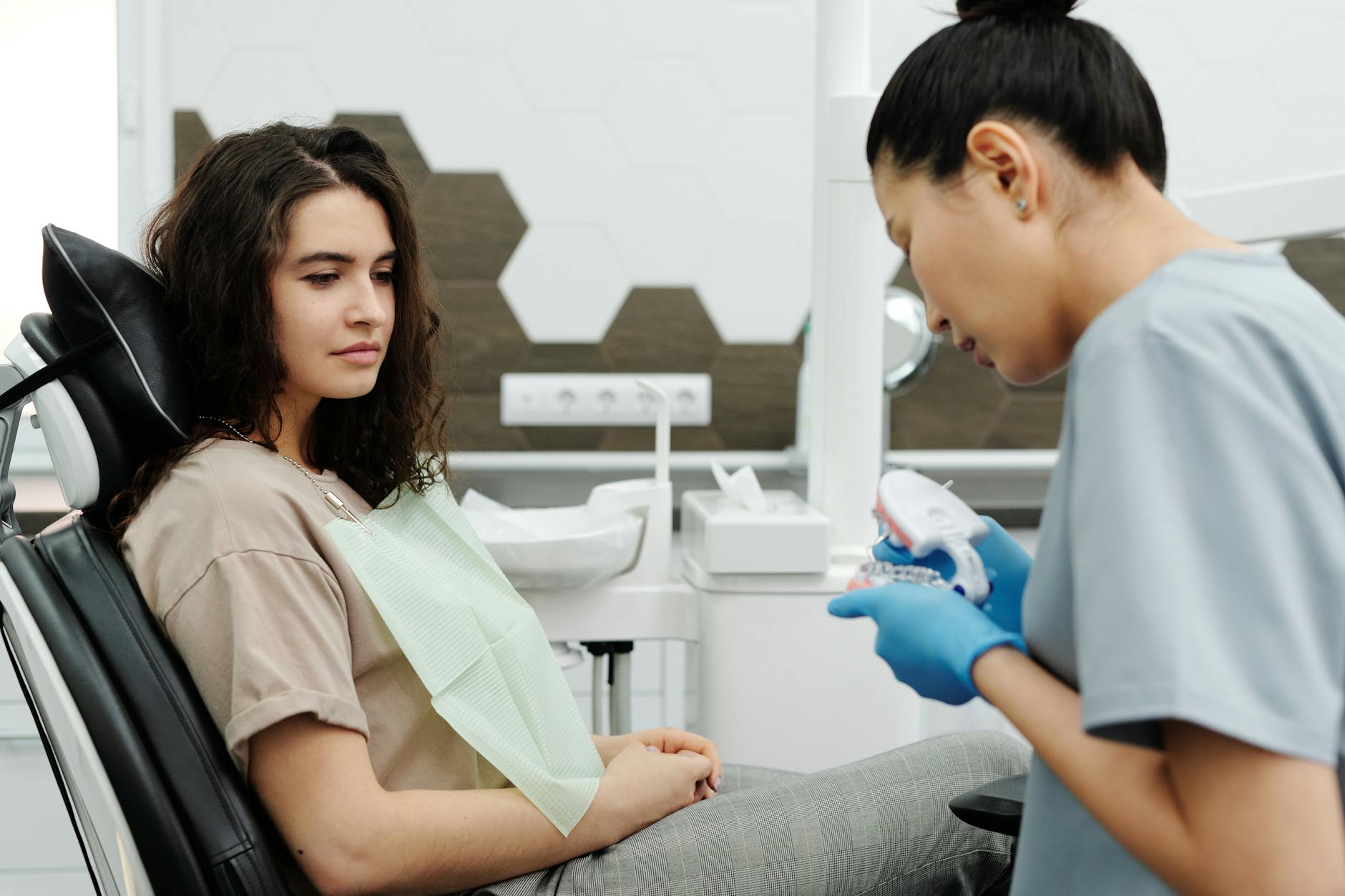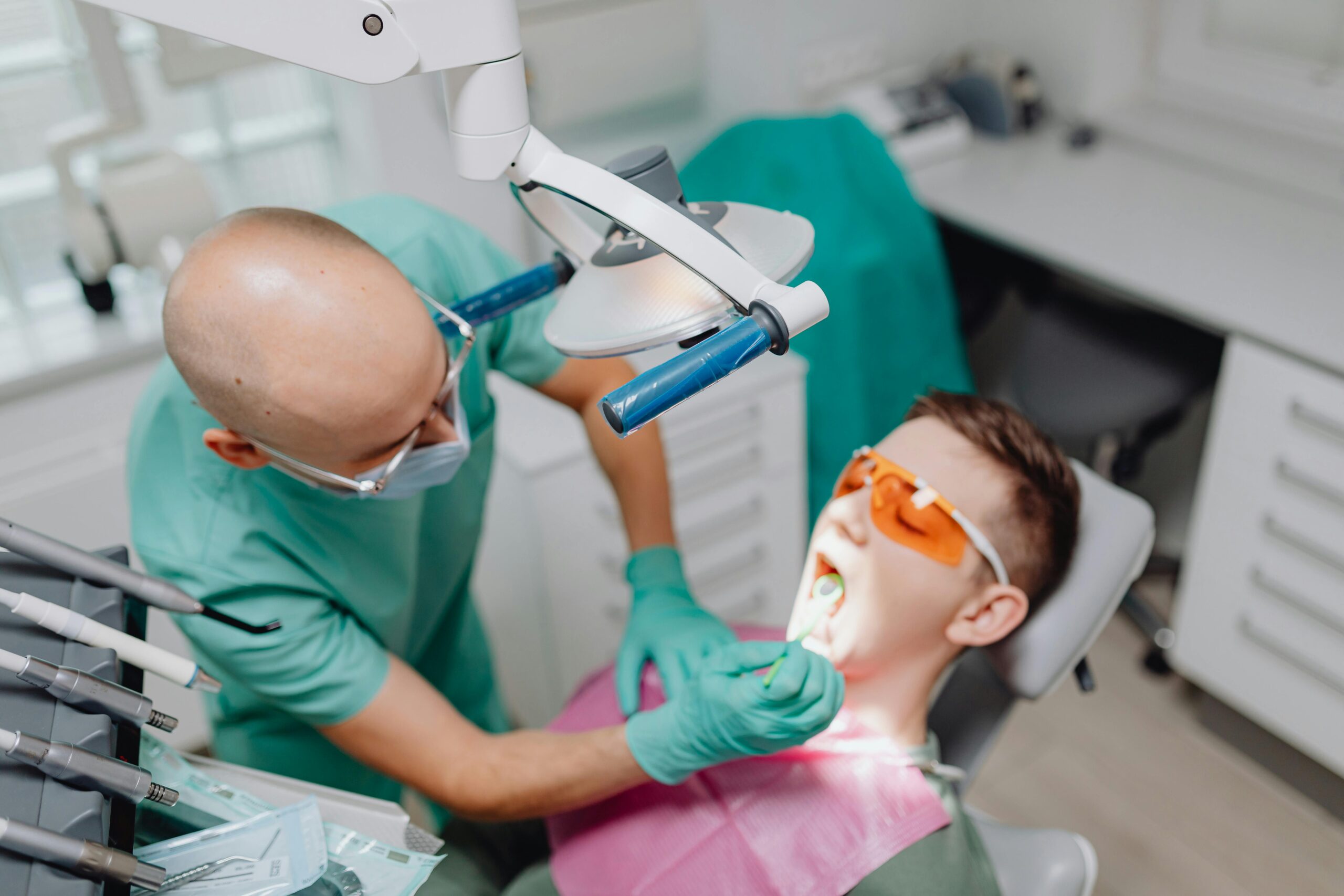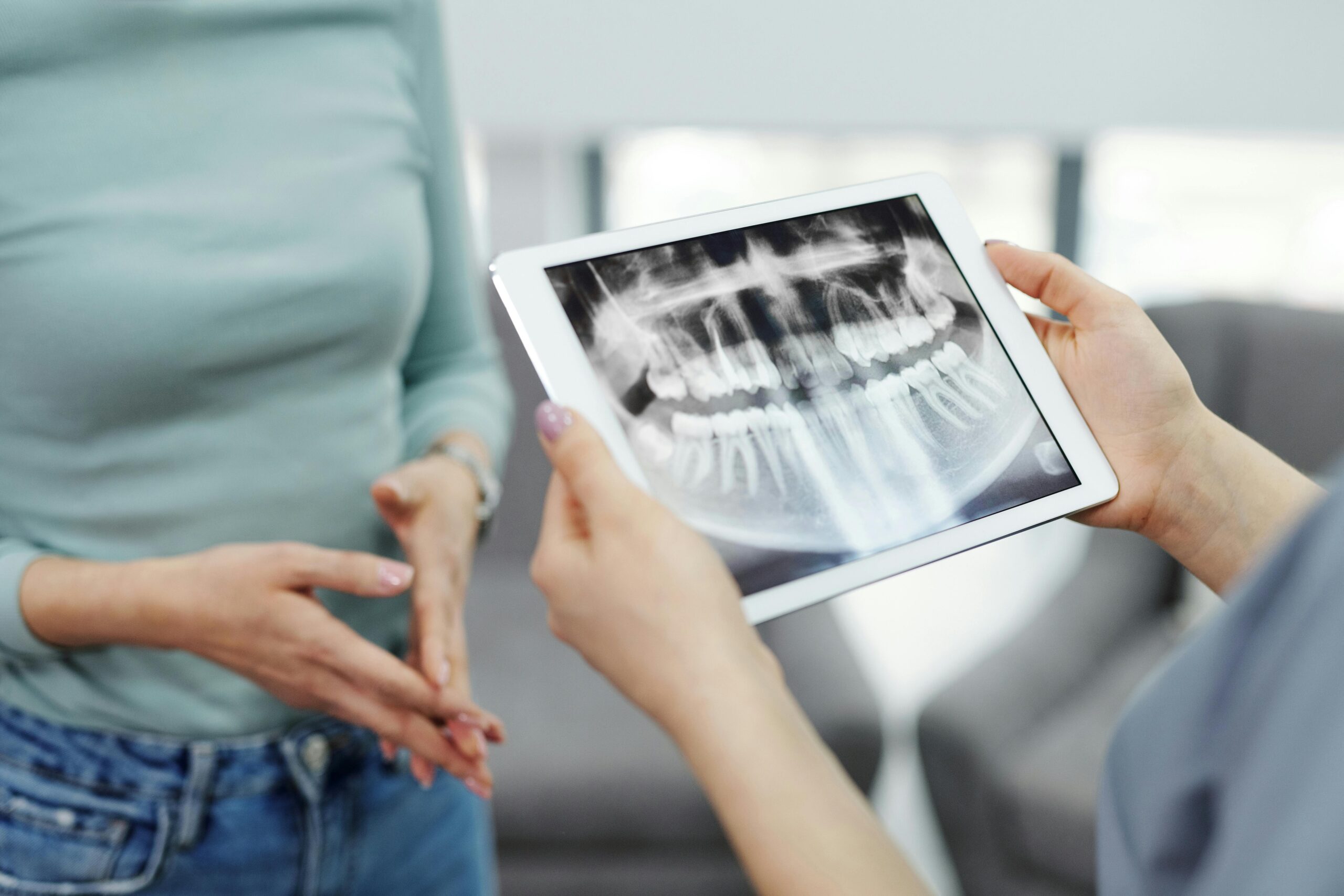Common Questions
Many people wonder about their wisdom teeth and what to do next. A frequent starting point is, “do I need wisdom teeth removed?” The answer depends on how the teeth are positioned, whether the gums and nearby molars are healthy, and what shows on dental X‑rays. An in‑person exam is the safest way to decide, because some problems are silent until they become uncomfortable.
- If there’s no pain, could they still be a problem? Yes—crowding, decay on the second molars, or cysts can develop without obvious symptoms.
- Is there a “best age”? Removal is often easier in the late teens or early twenties, but adults can be good candidates after a careful evaluation.
- What signs suggest it’s time to be checked? Tender or swollen gums behind the last molar, jaw ache, a bad taste or odor, or food consistently getting trapped.
- What can I do at home until I’m seen? Keep the area clean with gentle brushing, rinse with warm saltwater, choose soft foods, and use a cool compress for minor swelling. Avoid smoking/vaping and don’t poke the gums.
- When is it urgent? Fever, rapidly increasing swelling, trouble opening your mouth, swallowing, or breathing need prompt care—contact a dentist or urgent clinic right away. For non‑urgent concerns, call your dental office during business hours for guidance and scheduling.
- What if past X‑rays looked fine? Wisdom teeth can change position over time; periodic exams and updated images help catch issues early.
Signs You May Need Removal
Some wisdom teeth never cause trouble; others create symptoms that suggest it’s time to check on them. If you’re asking, “do I need wisdom teeth removed,” watch for pain or pressure behind your last molars, red or swollen gum tissue that traps food, bad taste or breath from recurring inflammation, or difficulty cleaning a partially erupted tooth. Crowding or shifting of nearby teeth, jaw stiffness, or findings on a dental exam—such as decay, gum pockets, or an impacted position on X-rays—can also point toward removal. An in-person evaluation confirms what’s going on and whether monitoring or extraction is the safer path.
At home, keep the area as clean as you comfortably can: gently brush the back molars, floss around them if accessible, and rinse with warm saltwater. Favor softer foods and avoid chewing directly on the sore area; a short, intermittent cold compress on the cheek can help with tenderness. These are temporary measures—please schedule a dental visit during regular business hours, especially if symptoms persist beyond a few days. If you notice increasing facial swelling, fever, or trouble opening your mouth or swallowing, contact a dentist or physician without delay.
When to Monitor Your Wisdom Teeth
Many people can safely monitor their wisdom teeth in the late teens and twenties, provided they have regular dental exams and periodic X‑rays. Monitoring is reasonable when there’s no ongoing pain, swelling, or infection, the teeth appear to have adequate space or are not harming neighboring teeth, and keeping the area clean is practical. Your dentist tracks growth, root development, and nearby nerves over time, because jaws and wisdom teeth continue to change into early adulthood. This watchful approach helps answer “do I need wisdom teeth removed,” or can they remain under observation.
Between checkups, notice warning signs that may change the plan: tenderness or swelling of the back gums, bad taste or persistent bad breath, food trapping you can’t clean, jaw stiffness, or cavities on the second molars. For mild, short‑lived irritation, keep the area clean by brushing gently and flossing the neighboring tooth, rinse with warm salt water, choose softer foods, and avoid poking under any gum flaps. A cold compress on the cheek and over‑the‑counter pain relief as directed can help with soreness if you’re medically able. These home steps are temporary and do not replace an exam. If symptoms persist beyond a day or two, recur, or worsen—especially if you notice pus, fever, or swelling that changes your bite—contact a dentist promptly during business hours for an in‑person evaluation.
Pathologies Associated with Wisdom Teeth
Wisdom teeth can develop normally, but they are also linked to several problems. The most frequent are pericoronitis—gum inflammation and infection over a partially erupted tooth—along with tooth decay and periodontal disease because the area is difficult to clean. They may also damage the neighboring second molar by trapping plaque or pressing against its roots. Less common issues include cysts around an unerupted tooth, resorption of adjacent roots, sinus irritation from upper third molars, and occasional nerve irritation when roots lie close to major nerves.
Early signs to watch for include tenderness behind the last molar, swelling of the gum flap, bad taste, food trapping, or jaw stiffness. If you’re wondering, do I need wisdom teeth removed, the answer depends on your symptoms, the tooth’s position, and what shows on an exam and X‑rays; some teeth can be monitored while others are safer to treat sooner. At home, you can gently brush the area, rinse with warm saltwater, and use a cold compress for comfort; over‑the‑counter pain relievers as directed on the label may help. Avoid poking the area or using sharp tools, and choose softer foods if chewing is uncomfortable. Because these conditions can progress, please arrange prompt in‑person care during business hours so a clinician can evaluate the tooth, relieve symptoms, and discuss whether removal or another approach is appropriate.
Imaging Techniques for Assessment
Imaging is the cornerstone of evaluating wisdom teeth. Clear pictures of tooth position, root shape, and nearby structures like the sinus and the lower jaw nerve help your dentist judge eruption potential and risk. These findings, together with your symptoms and oral exam, are what really answer the question, “do I need wisdom teeth removed?” Modern dental X‑rays use low radiation doses and shielding when appropriate.
- Panoramic X‑ray: A single image of both jaws that shows how the wisdom teeth are angled, whether they’re impacted, and their relationship to the sinus and main jaw nerve.
- Periapical or bitewing X‑rays: Focused views that reveal root details, decay between teeth, and localized bone changes around a specific tooth.
- Cone‑beam CT (CBCT): A 3D scan used selectively for complex cases to map exact root anatomy and nerve proximity when standard X‑rays are inconclusive.
Dentists interpret these images alongside age, available space, gum health, and hygiene access; the goal is to balance benefits and risks, not to remove teeth automatically. If the gums around a back tooth feel sore, you can gently rinse with warm salt water, keep the area clean with a soft brush, avoid hard or sticky foods near the area, and apply a brief cold compress to the cheek. Avoid placing aspirin on the gums. If you have discomfort, swelling, or a bad taste, schedule an in‑person evaluation during business hours so the appropriate imaging can be taken and a tailored plan discussed.
Potential Complications of Retained Teeth
Keeping a wisdom tooth that doesn’t fully erupt can be uneventful, but its position at the back of the jaw makes problems more likely. Common complications include inflamed gum tissue (pericoronitis), decay in the wisdom tooth or the neighboring second molar, and periodontal pockets with bone loss from trapped plaque. Crowding is less certain, but pressure can occasionally damage or resorb the second molar’s root, and fluid-filled cysts can form around impacted teeth; upper wisdom teeth may also irritate the sinus. Infections can recur, causing tenderness, jaw stiffness, and swelling that may spread to the cheek. Over time, these issues can be silent, so they’re often first seen on an exam and X-rays.
If you’re wondering, do I need wisdom teeth removed, pay attention to warning signs such as pain on chewing, swelling behind the last molar, bad breath or a bad taste, food impaction, or recurrent gum flare-ups. At home, you can gently rinse with warm saltwater, use a cold compress for swelling, choose soft foods, and take over-the-counter pain relievers as directed if you can safely do so. Avoid poking the area or placing aspirin on the gum. Then contact a dentist during business hours for an in-person evaluation; prompt care can prevent damage to the adjacent tooth and surrounding bone. Even without symptoms, periodic clinical and radiographic monitoring is important if a wisdom tooth is retained.
What to Expect at Your Visit
Your visit begins with a conversation about your symptoms, health history, and goals. If you’re wondering do I need wisdom teeth removed, this appointment is designed to gather clear information and explain your options in everyday terms. After a gentle exam and imaging, we’ll review what we see and outline whether monitoring, preventive care, or removal makes the most sense for you.
- Check-in and medical history review, including medications and allergies.
- Oral exam to assess gums, bite, tenderness, and any signs of infection.
- Imaging (often a panoramic X-ray or 3D view) to evaluate roots, nerves, and sinus proximity.
- Discussion of findings: eruption path, impaction, crowding, decay or gum risk, and jaw space.
- Personalized plan covering recommendations, timing, comfort options, recovery expectations, and your questions.
If you’re uncomfortable while waiting for your appointment, simple home measures may help: rinse gently with warm saltwater, keep the area clean with soft brushing and careful flossing, choose softer foods, apply a cold compress in short intervals, and consider over-the-counter pain relievers as directed on the label unless your physician has advised otherwise. Worsening swelling, persistent bad taste, difficulty opening your mouth, or fever deserve prompt attention—please contact the office during regular business hours so we can evaluate you in person.
When to Call a Dentist
Call your dentist whenever your wisdom teeth cause new or worsening symptoms, or if you’re simply unsure about how they’re coming in. If you’re asking, “do I need wisdom teeth removed,” it’s a good time to schedule an exam—X-rays can show their position and any hidden problems. Early evaluation helps prevent infection, pressure on neighboring teeth, and more complicated procedures.
Common reasons to call include persistent or recurring pain at the back of your mouth; red, swollen, or bleeding gums around a partially erupted tooth; a bad taste or odor you can’t brush away; jaw stiffness; cheek biting; pressure or crowding; or swelling that lasts more than a day or returns. Until you’re seen, keep the area clean with gentle brushing and warm saltwater rinses, use a cold compress for soreness, choose soft foods, and consider over-the-counter pain relievers as directed on the label if you can take them. Avoid smoking and drinking through straws, which can irritate the tissues. Please call the office during business hours for guidance and an in-person evaluation, especially if you notice fever, spreading swelling, or difficulty opening your mouth.
Understanding Extraction Procedures
If you’re wondering, “do I need wisdom teeth removed,” it helps to know what the process actually involves. Wisdom tooth removal is tailored to your tooth’s position, your age, and your health. After a visual exam and imaging, your dentist or oral surgeon plans a comfortable, step-wise approach.
On the day of treatment, the area is fully numbed; some patients also choose a calming medication after discussing risks and benefits. A small opening in the gum may be made, and a bit of bone removed or the tooth sectioned so it can come out gently. The site is rinsed, any stitches are placed, and a gauze pad helps start the clot that protects healing. Your team will review aftercare and schedule any needed follow-up.
- For the first day, rest with your head elevated and use a cold compress on and off to limit swelling.
- Bite gently on fresh gauze as instructed to control oozing; keep the area clean without disturbing the clot.
- Choose soft foods and plenty of water; avoid straws, tobacco, and alcohol while healing.
- Begin gentle warm saltwater rinses after the first 24 hours, and brush carefully around the area.
- Use over-the-counter pain relief as directed on the label.
- If you develop fever, worsening pain, foul taste or drainage, or bleeding that doesn’t slow, arrange in-person care promptly during business hours.
Frequently Asked Questions
Here are quick answers to common questions people have about Do I Really Need My Wisdom Teeth Removed? in Glendale, AZ.
- How can I determine if my wisdom teeth need removal?
Deciding on wisdom teeth removal involves assessing their position, potential impact on nearby teeth, and any symptoms you may have. Dental X-rays and an in-person examination are crucial, as they reveal hidden issues like impaction, decay, or damage to adjacent teeth.
- Are there signs that indicate my wisdom teeth should be checked?
Yes, certain symptoms suggest it’s time to evaluate your wisdom teeth: tenderness or swelling behind the last molar, jaw stiffness, recurring bad breath, or food consistently trapping around the area. Persistent pain or discomfort also warrants a dental check.
- Why might wisdom teeth cause problems even if they don’t hurt?
Wisdom teeth can silently cause issues like crowding, decay, or cysts without immediate pain. They may also affect the alignment of your other teeth or lead to infections that can be painful and complicated if not addressed early.
- What is the ideal age for wisdom teeth removal?
The late teens to early twenties are often considered the best time for wisdom teeth removal, as the roots are less developed and surrounding bone is softer. However, older adults can still undergo the procedure successfully after a thorough evaluation.
- What can I do at home if my wisdom teeth cause discomfort?
For discomfort, gently rinse with warm saltwater, apply a cold compress, and choose softer foods. Brush gently around the area without poking the gums, and avoid smoking or using straws. If pain persists or worsens, consult your dentist.
- Can wisdom teeth change even if previous X-rays were normal?
Yes, wisdom teeth may shift or change over time. Regular dental exams and updated X-rays help detect new issues early, ensuring that any developing problems are managed before they become serious.
- When should I seek urgent dental care for wisdom teeth?
Seek urgent care if you experience fever, rapidly increasing swelling, difficulty opening your mouth, or trouble breathing. These symptoms suggest a potential infection or other serious issues needing immediate dental evaluation.
Medical sources (PubMed)
- Sailer I, et al. Periodontol 2000. 2022. “Prosthetic failures in dental implant therapy.”. PMID: 35103329 / DOI: 10.1111/prd.12416
- Monje A, et al. Periodontol 2000. 2022. “Management and sequelae of dental implant removal.”. PMID: 35103326 / DOI: 10.1111/prd.12418
- Wei X, et al. Int J Oral Sci. 2022. “Expert consensus on regenerative endodontic procedures.”. PMID: 36450715 / DOI: 10.1038/s41368-022-00206-z
- Shahzad Dowlatshahi M, et al. Dent Clin North Am. 2022. “Crown Lengthening Techniques and Modifications to Treat Excessive Gingival Display.”. PMID: 35738732 / DOI: 10.1016/j.cden.2022.03.002
- Lee DJ, et al. Dent Clin North Am. 2019. “Management of Edentulous Patients.”. PMID: 30825989 / DOI: 10.1016/j.cden.2018.11.006
- Kullar AS, et al. Dent Clin North Am. 2019. “Are There Contraindications for Placing Dental Implants?”. PMID: 31097131 / DOI: 10.1016/j.cden.2019.02.004




